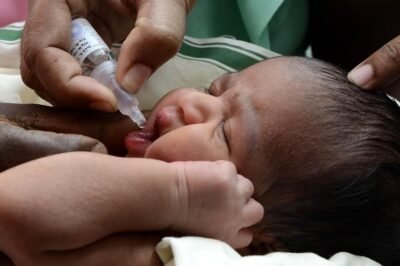The World Health Organization’s (WHO) database on polio cases, designed to monitor the progress of global eradication efforts, has come under scrutiny for its selective reporting. While the database tracks cases of wild poliovirus and circulating vaccine-derived poliovirus (cVDPV), it omits data on two critical categories: immunodeficiency-associated vaccine-derived poliovirus (iVDPV) and ambiguous vaccine-derived poliovirus (aVDPV). These data gaps raise concerns among public health experts about the transparency and efficacy of global polio tracking.
Understanding the Vaccine-Derived Polio Variants
In addition to wild poliovirus, three primary types of vaccine-derived poliovirus (VDPV) have emerged due to the oral polio vaccine (OPV), which uses a weakened virus strain. The virus occasionally mutates in vaccinated individuals, especially in areas with low immunization rates, leading to VDPV cases that can spread in communities. The three categories of VDPV are:
- Circulating Vaccine-Derived Poliovirus (cVDPV): The most concerning as it can cause outbreaks in under-immunized areas.
- Immunodeficiency-Associated Vaccine-Derived Poliovirus (iVDPV): Seen in individuals with compromised immune systems who cannot clear the virus effectively.
- Ambiguous Vaccine-Derived Poliovirus (aVDPV): Rare cases where the virus does not fall under either of the above categories but still poses risks.
Why the Data Gaps Are Concerning
The exclusion of iVDPV and aVDPV cases from WHO’s database creates a significant blind spot in understanding the full scope of polio transmission. By only tracking cVDPV and wild poliovirus cases, the database limits health officials’ ability to respond to potential outbreaks and to strategize resource allocation effectively. As these gaps obscure the true prevalence of VDPV, they may delay crucial interventions and risk missing key trends in polio evolution and transmission.
Implications for Global Eradication Efforts
The absence of comprehensive data complicates the global fight to eradicate polio. A complete dataset that includes all VDPV types would enhance the understanding of polio’s behavior and help tailor vaccination campaigns to mitigate risks. Experts argue that the lack of transparency could hinder the timely implementation of immunization strategies and the development of effective responses, particularly in regions with vulnerable health infrastructure.
Without a full record of iVDPV and aVDPV cases, countries may not fully grasp the scale of vaccine-derived transmission, undermining global eradication milestones. Policymakers rely on data to make informed decisions on immunization policies, and incomplete information could hinder progress toward the WHO’s eradication goals.
Moving Toward Comprehensive Polio Surveillance
To improve tracking, experts recommend WHO expand its reporting criteria to include iVDPV and aVDPV cases, thereby providing a holistic view of polio risks. Increased transparency would allow researchers and health officials to accurately assess the global polio situation and devise better, evidence-based responses. Additionally, enhanced data sharing between countries could lead to more effective and rapid intervention strategies, facilitating quicker containment and potentially hastening global eradication.
Conclusion: A Call for Transparent Reporting
A more transparent, inclusive WHO polio database is essential for a global strategy that leaves no room for error. By addressing current data gaps and including all categories of VDPV, WHO can provide health professionals and governments with the tools they need to eliminate polio globally. As the world moves closer to eradication, comprehensive and accessible data will be critical to overcoming the final hurdles in the fight against polio.








Leave a Reply